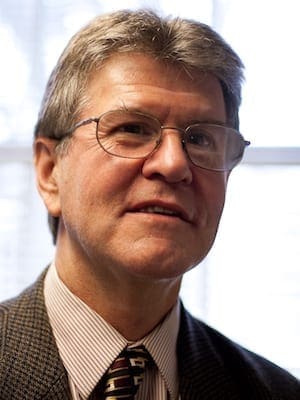There has been a sharp decline in public concern (or panic) about dangerous religious cults in the United States in recent years.
I believe this might mark a significant social trend, and perhaps even a bellwether for secularization.
Throughout American history, a recurrent narrative has warned of the danger of small, tight-knit groups following a charismatic leader and allegedly prone to sexual abuse and misconduct, the maltreatment and exploitation of members, violence and financial fraud, brainwashing and mind control.
Wherever we look in U.S. history, we find public fears about such groups, whether we are considering the 1820s or 1880s, the 1920s or, especially, the 1970s—the years of massive reaction against unpopular or stigmatized groups like the “Moonies” (Unification Church) and Scientologists, Hare Krishnas and Children of God, The Way International and Synanon.
Cults continued to be national news between 1984 and 1994, with the absurd Satanic Panic, the Waco Siege of 1993 and the mass suicides of the Heaven’s Gate and Solar Temple movements.
If you look at the past 15 years, basically the present century, when have we had a cult scare on anything along traditional lines?
There have been plenty of local concerns and investigations, by strictly local and regional media.
Offhand, I can think of a couple in Texas, and several more have surfaced around the country.
In 2008, we saw the massive official action against the polygamist sect headed by Warren Jeffs in Texas, the Fundamentalist Church of Jesus Christ of Latter-Day Saints.
Anti-cult groups like Cultwatch still operate. Recently, The Atlantic catalogued “The Seven Signs You are in a Cult.” But compared to the 1970s, the cult issue has vanished almost entirely.
When did you last see the once-familiar media story about a cult with exposés of its sinister guru, accompanied by tragic images of weeping parents wondering how their child could have become associated with this dreadful organization?
If such groups are out there, we are more likely to hear about them than we would 20 or 30 years ago because of the Internet, which allows strictly local concerns and debates to be blown up to a national or global scale.
If there were a cult panic in a city, it would surely go national within a very short time.
For many years, I taught a course at Penn State University on Sects, Cults and New Religious Movements.
I included what I thought was a useful term paper assignment, in which I asked students to imagine that someone close to them had become involved in a new fringe or religious group.
“Your friends and family are worried that it might be a dangerous cult and have asked you to find out about it urgently. Your paper will represent an investigation of the group, and the kind of information that you would want to pass on to your friends,” the assignment read.
By the year 2000, students found it ever harder to find controversial groups that anyone they knew might conceivably have run up against.
Confirming this impression, I looked around Penn State—a very large university offering exactly the kind of young population that should, in theory, offer rich pickings for predatory fringe sects.
But those sects weren’t present, and I looked hard.
Reflecting this change, the Jewish Daily Forward offered an article titled, “Jewish Parents Once Panicked About Teens Joining Cults—But No Longer. How Did Communal Freak-Out Fade Away So Completely?”
It’s a good question, and not just for Jewish families.
You might think that the removal of such a social danger as predatory cults is entirely good news, but I wonder what exactly is happening?
I wrote a column in 2012 that asked where the cults had gone, suggesting that “Cults no longer fill the role they once did in the religious marketplace.”
I went on to cite a Pew Research Center survey that noted a rise in American adults claiming no religious affiliation.
Assuming, for the sake of argument, that the survey accurately reflected a secular shift, I commented, “Without a solid core of spiritual activism and inquiry…there would be no foundation for the extremism that produced so many prospective members for the cults.”
“In other words, the first symptom we might expect of genuine American secularization would be the disappearance of cults, and a precipitous decline in activism and enthusiasm on the spiritual fringe, which is exactly what has taken place over the past two decades,” I said.
In my view, declining concern about cults is not just a function of shifting media attitudes, but it rather reflects a genuine and epochal decline in the number and scale of controversial fringe sects.
There really are far fewer fringe groups to be worried about. And that may be a mixed blessing.
 Philip Jenkins is distinguished professor of history at Baylor University in Waco, Texas, and serves as co-director for the program on historical studies of religion in the Institute for Studies of Religion. He is the author of numerous books, including “The Great and Holy War: How WWI Became a Religious Crusade.” A longer version of this article first appeared on The Anxious Bench, where he blogs regularly, and is used with permission.
Philip Jenkins is distinguished professor of history at Baylor University in Waco, Texas, and serves as co-director for the program on historical studies of religion in the Institute for Studies of Religion. He is the author of numerous books, including “The Great and Holy War: How WWI Became a Religious Crusade.” A longer version of this article first appeared on The Anxious Bench, where he blogs regularly, and is used with permission.
Philip Jenkins is distinguished professor of history at Baylor University in Waco, Texas, and serves as co-director for the program on historical studies of religion in the Institute for Studies of Religion. He is the author of numerous books, including “The Great and Holy War: How WWI Became a Religious Crusade.”

